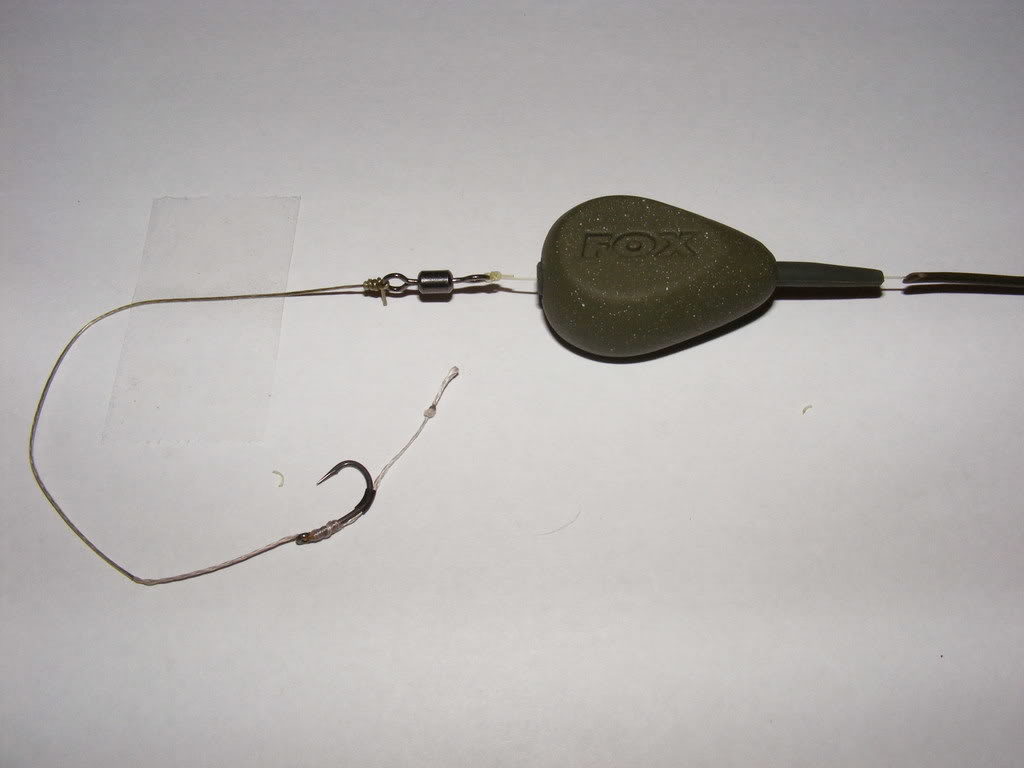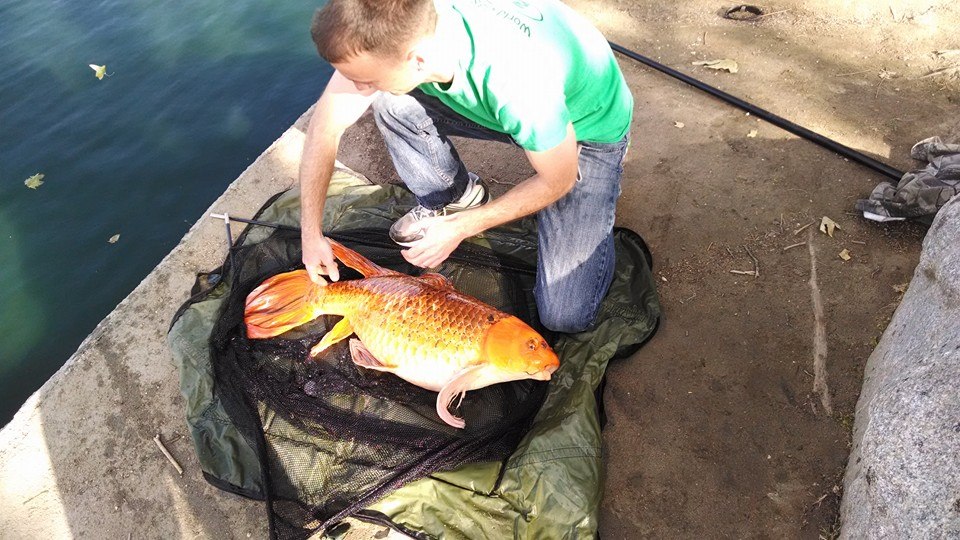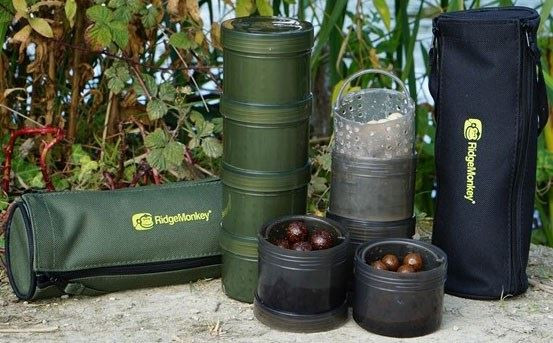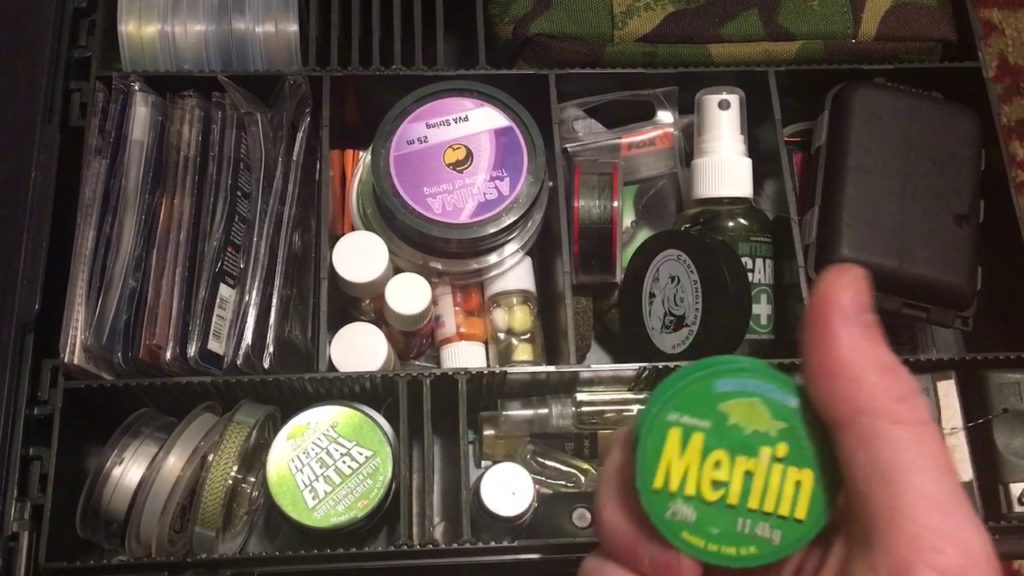Long and painful hours of planning, anticipation, overthinking melt away when your alarm cries out of the silence for the first time.
Around the end of February, we started to plan an epic adventure. Erick, Joseph, and myself were looking to get away for a week in a remote corner of the country and catch some beautiful, relatively untapped carp of Wild West. We set forth on planning the logistic nightmare to travel over 1300-mile one-way trip. We spent countless hours on Google Maps and Navionics looking for new unfished areas. While we found many great looking areas on the map we had already had a backup plan in mind if they washed out. Fast forward to June.
The day has finally come. Erick and Josef leave early Sunday morning to embark on the drive from Texas to the mecca of carp fishing in the United States. The one, the only BIG CARP TACKLE!!! After some “shopping” as Erick likes to call it as he pockets some Solar Popups and tries to walk out with a 10kg bag of boilies; we spend a bit of time chatting and loading up the truck. I will take full responsibility with the loading issue. The original plan was to rent a small enclosed trailer to take up all the gear in however in the anticipation I forgot to actually reserve it and there was no one available to rent one from on a Sunday. I caught a good bit of flak for forgetting even though we still managed to fit everything and on a side note, Josef is awesome at loading a vehicle! We finally take off around 1:30 pm and begin to embark towards our destination. Hopes are high, energy drinks are flowing, and vaping machines are vaping as we start the 20-hour drive to get to our first destination.

Erick and Josef

He tried
We had several areas we were looking to scout and hopefully fish. After the 20+ hours and countless Redbulls later (we should have asked them to sponsor the trip!) we came to our first stop. There is a parallel to The Story of Goldilocks and the Three Bears with us selecting a spot and it turns out that we chose correctly. As we traveled around to the North side of the lake on a dirt road we came to a point where we had to stop as it turned into a nature preserve. This was not even a quarter of the way we wanted to travel so we were pretty disappointed. The campground also looked pretty busy so we decided that it was not the spot for us. One of the downsides for the first spot falling through is that our 2nd choice is over 2 hours west of our first. So we decide to scout several river spots along the way. Surprise, none of those spots pan out either as the river has a ripping current and the access is not what it seemed like on Google Maps. After the river is a washout we make our way to the second spot. Just like the rest of the river we could not find adequate bank space and the areas we found did not allow overnight camping. At this time, we have been in the truck for almost 30 hours with very little sleep and plenty of anticipation which is fueled by energy drinks and images of large fish dancing in our heads. We make the tough albeit easy decision to head to the third and final spot which happens to be almost 5 hours back to the East. Needless to say we were not very happy about the drive but we know we will be somewhere with a good chance to bank some beautiful fish. Now after around 40 hours of driving we arrive at our final destination. Just as Goldilocks found out, the third spot was just right. The wait is over.

We arrive late afternoon/early evening to a strong, southerly windstorm right into our faces and the chosen swim. Talk about getting a confidence booster! Without a soul in sight we start unloading and choosing our respective swims. We are fishing a gentle point that faces into the south/southwest with a small, slightly deeper cove to our right and a shallow flat to our left. Erick chooses the center swim hoping to allow Josef (on his left) and I (on the right) to pickup any fish coming from our flanks. Our pods are setup about 20 yards from each other as we fan the rods across the point. We haphazardly cast our rods out for the night and finish setting up camp unknowingly needing the rest for it will be a long, eventful week on the bank.
We rise pretty early for having been driving almost 2 days without a break. Bypassing breakfast and getting our baiting sorted out it isn’t long until the first take. Shortly after we wake my rod is the first to go. Now there is a little backstory to this trip. I have been exclusively targeting carp since 1993/1994 and in all these years I have netted and been witness to countless mirror carp however I have not once, in probably tens of thousands of carp, ever caught my own mirror carp. Well that ended at 7:15 am on this particular morning. After a short but very nerve racking fight as it is the first hookup of the trip and I would never live it down if I were to loose the first fish. As she slips into the net we are all relieved and excited that we are into the fish within hours of having lines in the water. Now in good faith for the trip we I release the fish, my new mirror PB around 16lbs, back without an official weight in anticipation of bigger things to come.

My first Mirror Carp. It only took 20 years!

Beautiful native species
Shortly after my new Pb I receive a second run. This time is is a sucker and another new PB for me. I end up with a second sucker as well before things take a turn.For what seems like the rest of this day and most of the next Erick had the lucky swim. Cranking out fish after fish. Feeling bad for Josef as he has yet to have a run. Josef catches a break while Erick is off “taking care of business” and takes a fish away from Erick on his crazy left handed reels. If you have never tried to play a fish on your off hand with a 12 ft rod you should try it because it’s borderline comedy. Now that we have all had a fish the rest of the trip turns into insanity. We averaged 2-3 fish an hour for almost every daylight hour we had. The night bite was not very effective and while we caught it was actually nice to have a break! After 3 days of almost non stop catches the real magic happens. After catching fish from 3 rod lengths out to around 60 yards out I decided to try a single fluoro hook bait approach. Tying up a 15 inch stiff hinge rig with a 3 in hook length section and a Nash baits 15mm Citruz popup I blast the middle rod to as far as I can. I have not baited out past 60 yards or so and this cast is about double that. It didn’t take long before I have a fish on, another average fish for the trip around 24/25lbs. I bring the rig back to the brolly and touch up the hook point with my Jag file and stones, add a PVA nugget for protection and proceed to blast it out into the same area. Less than an hour goes by before the same rod rips off again. This time the fish feels much heavier. With multiple slow, powerful runs I know I have hooked into a much better fish than the rest. Now I had told Erick early on into the trip that if he sees the fish and it’s big to not say anything as I don’t want to get anxious and do something wrong. Well he messed that up! While waist deep in water turns around and gives me a big smile and a thumbs up! Great now I know that I cannot lose this one. After a brutal battle back and forth along with Erick’s superhero net skills and the largest fish of the trip so far is into the net. This fish made the trip for me, hands down. My new PB of 36 lbs 4 oz and it’s a magnificent mirror! Not only have I caught my first mirror and many in the 24/25lb range this fish left me in amazement! Time stood still as I knelt in the water next to the cradle and gazed upon a beast of carp. Now as an American I’m not quite sure what the carpy English phrase “chuffed to bits” means however it seems to be good and you could say that was how I felt haha. After quite a few photos and a celebratory Coors I took a small break and let everything set in. What more could you ask for a trip that started with 40+ hours in a truck, close to 2000 miles of driving one way?

In Awe

This is what carp angling to me is all about. 36 lb 4 oz new PB

Wild carp at their best.

Safely released until we meet again.
Well I’m glad you asked! Something even more spectacular happened the next day. We have all seen photos and heard stories of catching braces and triples. Folks I believe we may have one you might have not heard of because we can’t recall it either. Within 30 minutes we had caught a heptad of carp. Don’t worry we looked up the proper term and a heptad is a group or set of seven…. We managed to have 4 fish in the cradle and 3 of the 4 nets we had also had fish in them (safely in the water still). In the interest of fish safety we release 4 of them to get a group photo of 3. Among the 3 that we took in the group photo is also the largest fish which eclipsed my PB and was caught by Erick at 38 lbs. A gorgeous and long fish we took some great photos that he will share with you all.

A heptad of carp! These 4 in the cradle and another 3 in separate nets at one time. All fish were released unharmed.

3 of the 7 fish we landed in quick succession.

One of many braces that graced our nets.

One day she’ll grow up and be a 30+

Lets call her Marilyn for the “beauty mark” on her scale.


Josef scored 2 fish while we were visited by Officer Scott of the Idaho Department of Fish & Game. He had no idea that this lake is such a special place for carp anglers that make the journey and stayed around for an hour asking questions and taking photos to show his co-workers. Make sure you get your proper licenses!
 Thank you to a random Coors bottle cap for giving us the motto of the trip.
Thank you to a random Coors bottle cap for giving us the motto of the trip.
Overall the tripwas a huge success! We captured 90+ carp, only 10 were under 20 lbs with an average of 24/25 lbs. 3 thirties including my new PB. My fish were caught on the multi rig, chod rig, and stiff hinge rig. From distances of 30 feet to over 100 yards. Bait wise almost all of mine were on Nash Citruz 15mm popups, a few on Nash Key 20mm cultured hookbaits and a few on CC Moore 15mm White Pacific Tuna Popups. The fish seem to have a very visual feeding response and the bright baits produce throughout the trip.
End Tackle: Nash, Kryston, Ambush
Rods: Saxon Hexalite 3.0tc and one prototype rod
Reels: Daiwa Basia
Pod: Original Solar Sod Pod
Alarms/Indicators: ATTs crystal body/Solar Titanium short arm indicators
This trip is now my greatest trip to date not only because of the fishing but also because of the camaraderie between good friends and the overall experience which we will not forget any time soon. Since returning back home there hasn’t been a day go by that I don’t flip through the photos and smile and wonder why we even came back at all!
In the immortal words of Sir Izaak Walton, “I have laid aside business, and gone a-fishing.”
See you on the banks! Tight lines!











 Depending on your situation and how you fish one may be better than the other. If you carry all your gear, then a regular unhooking mat is the way to go. If you don’t mind hauling a larger and heavier one, then cradles cannot be beat. I personally would opt of a cradle all the time but times like stalking do not make carrying one very easy so I take a mat.
Depending on your situation and how you fish one may be better than the other. If you carry all your gear, then a regular unhooking mat is the way to go. If you don’t mind hauling a larger and heavier one, then cradles cannot be beat. I personally would opt of a cradle all the time but times like stalking do not make carrying one very easy so I take a mat.

































